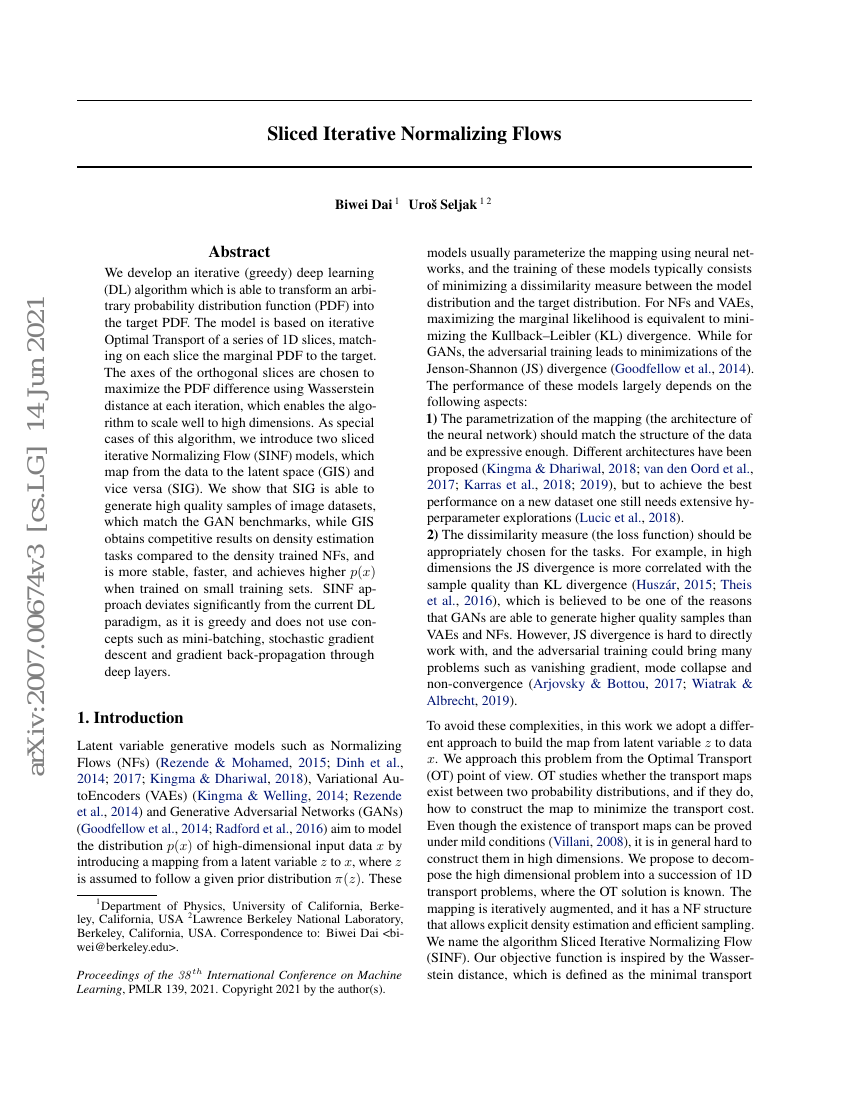Command Palette
Search for a command to run...
Biwei Dai Uros Seljak

Abstract
We develop an iterative (greedy) deep learning (DL) algorithm which is able to transform an arbitrary probability distribution function (PDF) into the target PDF. The model is based on iterative Optimal Transport of a series of 1D slices, matching on each slice the marginal PDF to the target. The axes of the orthogonal slices are chosen to maximize the PDF difference using Wasserstein distance at each iteration, which enables the algorithm to scale well to high dimensions. As special cases of this algorithm, we introduce two sliced iterative Normalizing Flow (SINF) models, which map from the data to the latent space (GIS) and vice versa (SIG). We show that SIG is able to generate high quality samples of image datasets, which match the GAN benchmarks, while GIS obtains competitive results on density estimation tasks compared to the density trained NFs, and is more stable, faster, and achieves higher $p(x)$ when trained on small training sets. SINF approach deviates significantly from the current DL paradigm, as it is greedy and does not use concepts such as mini-batching, stochastic gradient descent and gradient back-propagation through deep layers.
Code Repositories
Benchmarks
| Benchmark | Methodology | Metrics |
|---|---|---|
| image-generation-on-fashion-mnist | Sliced Iterative Generator | FID: 13.7 |
| image-generation-on-mnist | Sliced Iterative Generator | FID: 4.5 bits/dimension: 1.34 |
Build AI with AI
From idea to launch — accelerate your AI development with free AI co-coding, out-of-the-box environment and best price of GPUs.